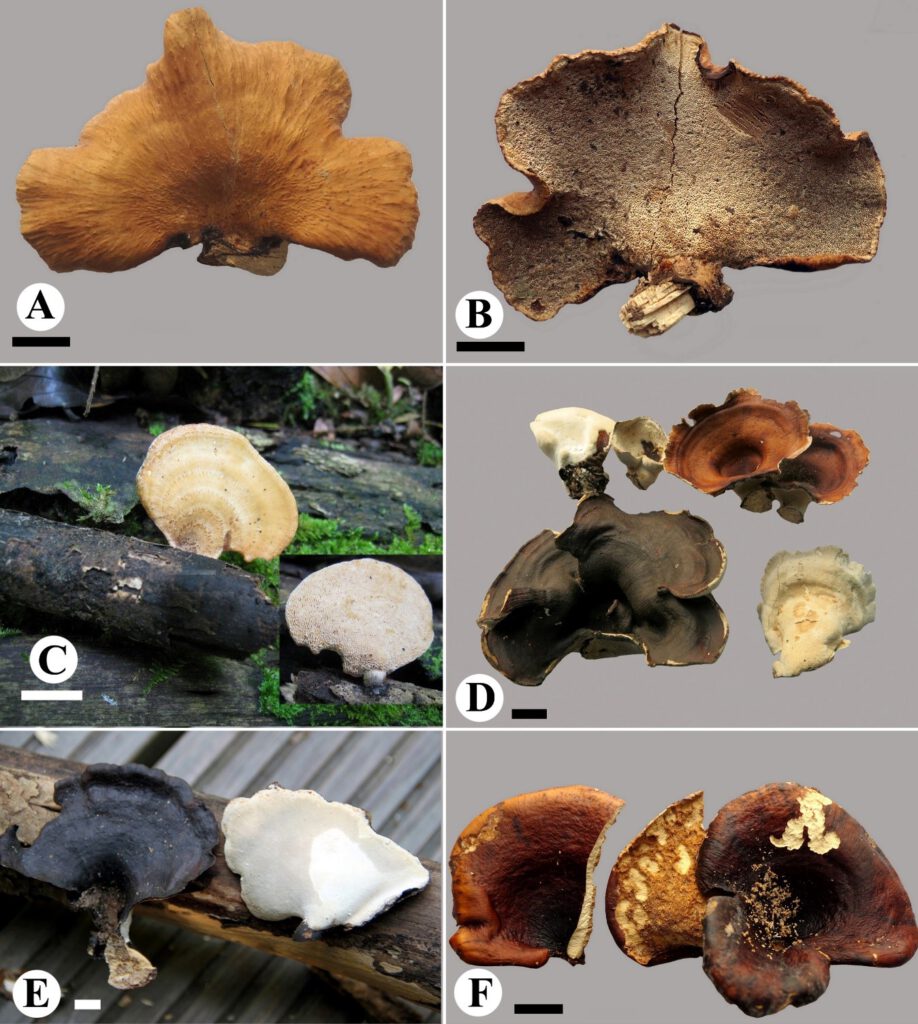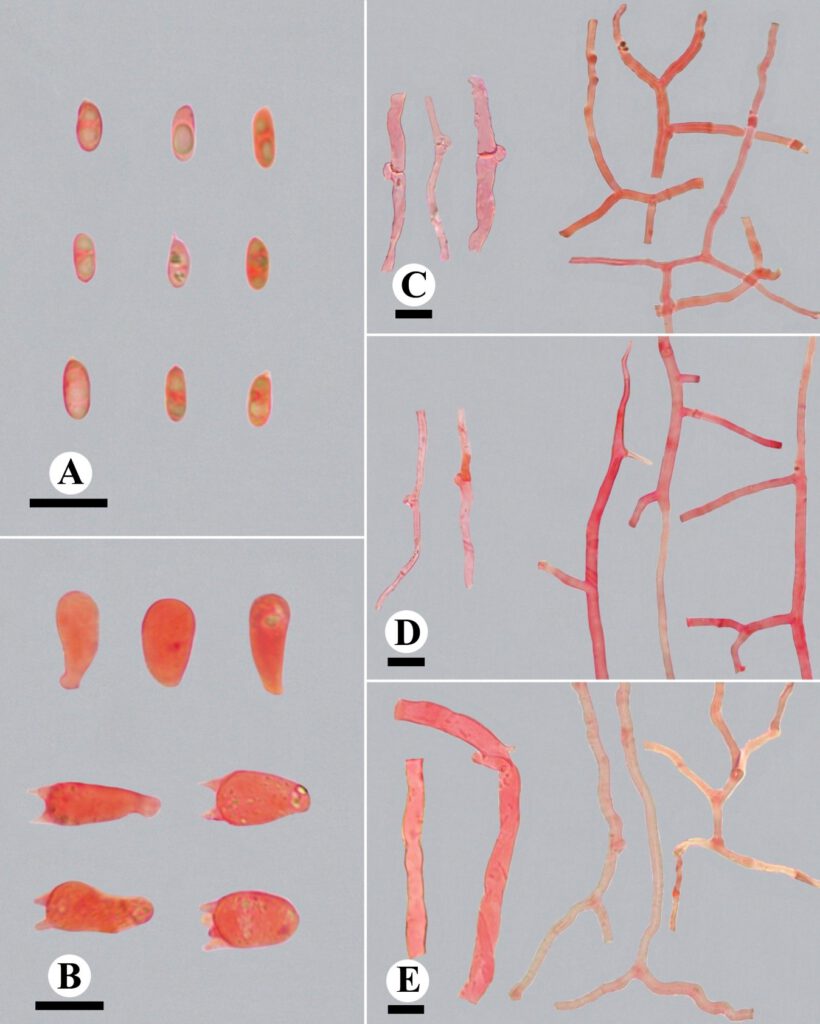Picipes annularius B.K. Cui, Xing Ji & J.L. Zhou, sp. nov.
MycoBank number: MB 559396; Index Fungorum number: IF 559396; Facesoffungi number: FoF 10659;
Description
Basidiomata – Annual, laterally stipitate, solitary, coriaceous when fresh and hard when dry. Pilei fan-shaped, projecting up to 1.8 cm long, 2.1 cm wide and 3 mm thick at base. Pileal surface pinkish buff to buff yellow when fresh, becoming buff upon drying, with radially aligned stripes when dry; margin yellowish brown when dry, covered with beige to cinnamon-buff small squamae, annularly arranged, straight. Pore surface pinkish buff when fresh, becoming buff to yellowish brown when dry; pores angular, 3–5 per mm; dissepiments thin, entire. Context white when fresh, becoming buff to ivory when dry, corky upon drying, up to 1.5 mm thick. Tubes concolorous with pore surface, not decurrent and has an obvious boundary with stipe, up to 2 mm thick. Stipe short, white when fresh and pinkish buff when dry at the upper parts towards the tubes, grey to black when fresh and greyish buff to dark brown when dry at the low parts, tomentose, up to 4 mm long and 3.5 mm in diam.
Hyphal structure – Hyphal system dimitic; generative hyphae bearing clamp connections; skeleto-binding hyphae IKI–, slightly CB+; tissues unchanged in KOH.
Context – Generative hyphae frequent, colorless, thin-walled, rarely branched, 2–5.6 μm in diam; skeleto-binding hyphae dominant, colorless, thick-walled with a narrow lumen, frequently branched, interwoven, 1.2–4.6 μm in diam.
Tubes – Generative hyphae infrequent, colorless, thin-walled, rarely branched, 1.3–3.3 μm in diam; skeleto-binding hyphae dominant, colorless, thick-walled with a narrow lumen, with dendroid branches, strongly interwoven, 1.1–2.9 μm in diam. Cystidia and cystidioles absent. Basidia clavate, with a basal clamp connection and four sterigmata, 13–17 × 7–8.6 μm; basidioles in shape similar to basidia, but slightly smaller.
Stipe – Generative hyphae infrequent, colorless, thin-walled, rarely branched, 3.2–6.9 μm in diam; skeleto-binding hyphae dominant, colorless, thick-walled with a narrow lumen, frequently branched, interwoven, 1.5–4.9 μm in diam.
Basidiospores – Basidiospores cylindrical, rarely oblong, colorless, thin-walled, smooth, occasionally bearing one or two guttules, IKI–, CB–, (5.9–)6.1–7.2(–7.9) × 2.6–3.3(−3.4) μm, L = 6.65 ± 0.46 μm, W = 2.95 ± 0.2 μm, Q = 1.88–2.67, Qm = 2.27 ± 0.2 (n=38/1).
Material examined: CHINA, on fallen angiosperm branch, 18 August 2011, B.K. Cui, Cui 10123 (BJFC, holotype).
Distribution: Subtropical regions of China.
Sequence data: Cui 10123: ITS: KX900060.1 (ITS4/ITS5); LSU: KX900176.1 (LROR/LR7); nSSU: KX900286.1 (PNS1/NS41); EF1a: KX900363.1 (983/1567R)
Fig. 1–C Basidiomata of Picipes annularius (Cui 10123). Scale bars: 1 cm. Fig. 4 Microscopic structures of Picipes annularius. (A): Basidiospores; (B): Basidia and basidioles; (C): Hyphae from context; (D): Hyphae from trama; (E): Hyphae from stipe. Scale bars: A-E = 10 μm.

Fig. 1

Fig. 4
